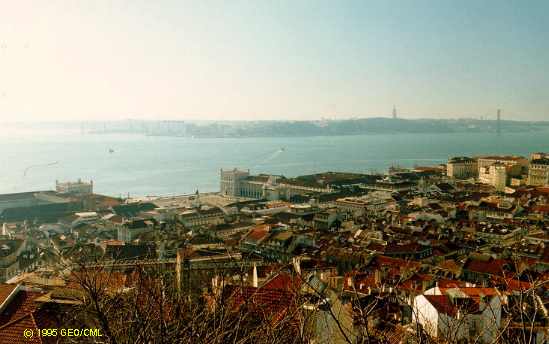

Castelo de São Jorge
(São Jorge Castle)
It was on this hilltop that the Phoenicians first settled. Remains of a
later Roman city are still being excavated, but the massive perimeter walls
of the castle (and probably its ten towers) were raised by Visigoths and
restored and strengthened by the Moors. The ruined 13th-century palace
inside served as the principal palace of Portuguese kings for more than
300 years, and was not replaced until the 16th century when Manuel I built
a new one—later destroyed by the great earthquake of 1755—in the lower
city. Afterward, São Jorge Castle became a prison.
Within the walls is a haphazard garden populated by rare white peacocks,
black-necked swans, ducks, ravens, chickens, and the occasional flamingo.
To the southeast, spilling down the hill, is the aged Alfama quarter. To
the east, in a valley, spread the orderly avenues and plazas of Pombal's
Baixa, with the Praça do Comércio beside the river. The Av.
de Liberdade stretches straight as an arrow north to the large park of
Eduardo VII. The Bairro Alto rises directly east of São Jorge hill.
Even further east, and south, the American-built Ponte 25 da Abril curves
gracefully cross the Tejo River. The bridge's 1,023 meters (3,356 feet)
of single span is the longest in Europe and second longest in the world.


